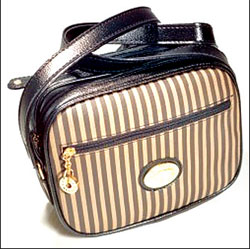|

[Natural world]
1.What fish looks like a seaweed?
2.Which birds trot on lillies?
3.Can a bird change the shape of its beak?
4.What is the heaviest bird in the air?
5.Which chicks fly on the day they are born?
6.Which polar animal has the longest hair?

7.What colour is a polar bear's skin?
8.Which is the smallest migrant bird?
9.What mini beast can suffocate a caribou?
10.How long is the longest stick insect?
[Science]
1.The hottest part of lightning can reach a temperature six times
hotter than the surface of the Sun. True/false?
2.Who introduced the Morse Code?
3.Electrical resistance is what makes the filament (long, thin piece
of wire) in a bulb glow and the element in an electric heater become
hot. How this resistance is measured in ohms. After whom is it named?
4.As long ago as 1810, many large cities had street lighting, using
an electric current which jumped between two rods. Who introduced this
system which was known as ‘arc lighting'?
5.Who invented the chronometer in 1735 to calculate longitude and
latitude more accurately than early time measurement tools?
6.Name the Dutch scientist who constructed the first mechanical clock
with a pendulum mechanism in 1657?
7.Who invented a pendulum clock which was so accurate that it was
used in the Royal Observatory of Greenwich?
8.What was the first crude tools of measurement?
9.What is the modern unit of measurement for a large area of land?
10.When was the Cadil, the metric standard of capacity which became
known as the litre established?
Answers:
[Natural world]
1.The pipe fish. They are long, slim dark green fish that look just
like strands of seaweed in shallow, weedy waters. They swim upright
among the seaweed fronds.
2.Jacanas. They are sometimes called ‘lilly-trotters'. They live in
ponds and lakes walking on lilly pads to catch the insects that live on
them. Their long feet spread their weight so that the leaves don't bend
and sink.

3.Yes. An oyster catcher's beak changes in a few weeks from short and
blunt while its eating cockles and mussels to long and narrow when its
diet changes to worms and other soft prey.
4.The Kori bustard from East and South Africa. It weighs about 14 kg
(31 lbs) Because it finds flying such hard work, it does so only in
emergencies and only for short distances.
5.The chicks of the mallee fowl in Australia, soon after they merge
from the heap of warm sand where they hatched, the chicks fly up to a
branch to roost in safety. They have to look after themselves from the
first day, unlike most other chicks who are fed and protected by their
parents.
6.The Musk Oxen. They are large beasts related to sheep and goats.
Their thick coats contain two different kinds of hair. The shaggy outer
layer includes hair up to 1 m (3 feet) long. The dense, short woolly fur
beneath gives extra warmth.
7.The polar bear's skin is black. The hollow hairs on its thick fur
reflect the light and make its skin look white.
8.The rufous humming bird which is less than 9 cm (4 in) long. It
flies every year from Alaska to its winter quarters in Mexico; a round
trip of 6,400 km (3,800 miles).
9.The warble fly lays its eggs in the cariben's skin. When maggots
hatch out, they burrow into the skin and feed on the caribon's flesh.
Sometimes so many maggots hatch out in a caribon's throat that it dies
from suffocation.
10.The longest stick insect is the sawfooted stick insect of
South-East Asia. It grows up to 33 cm (13 in) long – as long as a pet
rabbit.
[Science]
1.True
2.Samuel Morse – a dot and dash code of short and long electrical
signals.
3.German scientist George Simon Ohm.
4.Sir Humphrey Davy.
5.John Harrison
6.Christian Huygens (1629-1695)
7.W.H. Short in 1921.
8.Parts of the body. Shorter units of length were measured against the
thumb – the Roman ‘Uncia’ became the inch – the handspan or the foot.
Longer lengths were measured against the forearm or a stride.
9.A hectare which equals 100 acres or 10,000 sq metres.
10.In 1794. |


